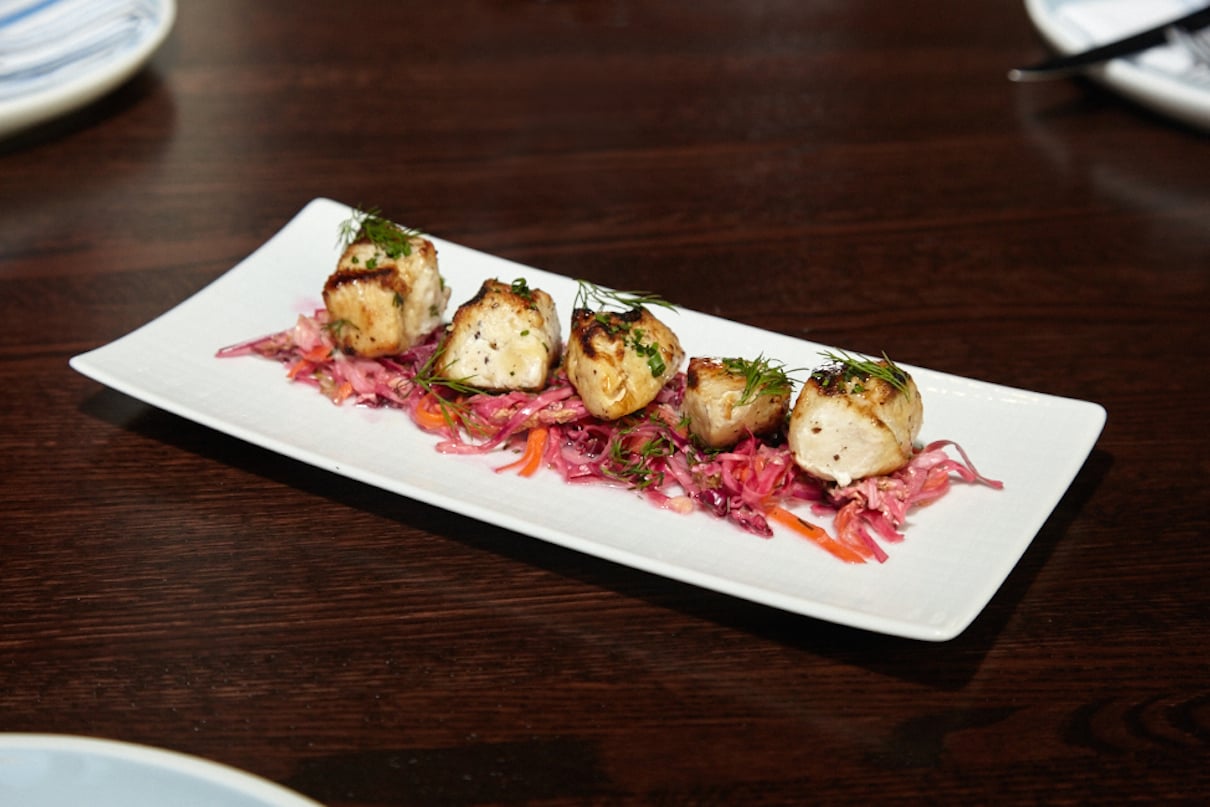Good Indian Cooking in a Pretty Bethesda Setting
In the fickle restaurant world there are neighborhood stars that owe much to location. Then there are destination places, ones worth a trek. Passage to India is both.
Carved wooden doors and enameled window panels that bring to mind the intricacy of cloisonné make for a dining room that's exotic enough for a lovers' tête-à-tête and posh enough for a powwow of suits.
Chef/owner Sudhir Seth, once part of the Heritage India group, has struck out on his own with the expertly rendered classic and nouveau dishes on the region-by-region menu.
Start with tender ringlets of calamari stir-fried with Indian spices, lemon, and coconut. Or nip into a heap of jumbo lump crab delicately seasoned with herbs and onions. Both are testament to the wisdom of restraint. Sev-Murmura Chat, a toss of puffed rice, tamarind, mint, and a soupçon of yogurt is one of the best renditions around, the crunchy, orzo-size puffs enlivened with cilantro and dates. The similar Samosa Chaat uses yogurt, chickpeas, and sour-sweet tamarind to good effect.
Seekh kebab is as complex as I've had anywhere, and despite its odd fast-foody name, Cheesy Chicken Kebab is subtle and elegant: ground chicken, sharp cheddar, nutmeg, and jalapeño balled into a fritter. The vegetable fritter platter would be better off with more cauliflower and less spinach and potato. Tandoori scallops seem out of place as a starter–I'd order them as a smallish entrée–but they are delicious proof that seafood cooked in the tandoor need not be as dry as the Gobi.
Vegetables are among the standouts on this menu, making Passage to India vegetarians' nirvana. Kamal-Kakri Masala, a marvelous northern Indian casserole of peas and the distinctive tuber known as lotus root, delivers a jolt of heat with its curry sauce. Panchphorner Parmal Shaak is a lighter affair of fragrant seeds and crunchy baby squash that look like cornichons and taste a bit like okra. Palak Makai is a winning variation on the famliar puréed spinach dish palak paneer, made with corn instead of cheese. Baby eggplants in sesame-and-peanut gravy will have everyone at the table vying for the last spoonful.
Meat and seafood aren't given short shrift either. The northern Indian bone-in tandoori chicken is the most succulent I've had in a long time. Same goes for another northern Indian dish, chicken makhni, commonly known as Butter Chicken, in creamy tomato sauce. Western India also has its moments: a curry of fish–tilapia on the night we had it–pumped up with coconut, coriander, and sauce, and two Parsi dishes– lamb with apricots and chicken in fiery cilantro paste.
Like the scallops, shrimp is treated with respect, be it prawns in a curry of fenugreek and tamarind or in the unusual eastern Indian malai chingri, fragrant with coconut, cloves, ginger, and cinnamon.
Cooking flatbreads in the tandoor can be tricky, but here they arrive crisp and hot. Try the wonderful garlic-and-cilantro naan and a stuffed kulcha and if you're in an adventurous mood, Missi Roti, an unusual bread made from chickpea flour.
Though the restaurant has a respectable wine list, Taj Mahal beer or a cool mango lassi are the drinks of choice.
Desserts are as refined as the rest: There's dense pistachio Indian ice cream, shredded carrot halwa, a creamy apricot-studded pudding, and an offbeat bread pudding that has the look of nut-brown French toast, baked in reduced milk to cut the lingering sweetness.
Atmosphere: Elegant and lush.
Food: Beautifully done classics plus a handful of rarely seen dishes and house creations. The menu is divided into regional plates.
Service: Helpful though sluggish at times.
Price: Lunch specials, $6.95 to $9.95; dinner main courses, $8.95 to $18.95. Dinner for two: around $60.
Value: Good.
Bottom line: You're lucky if you're local, but it's worth traveling here if you're not. Natives of India seek out this restaurant for some of the specialities.
















